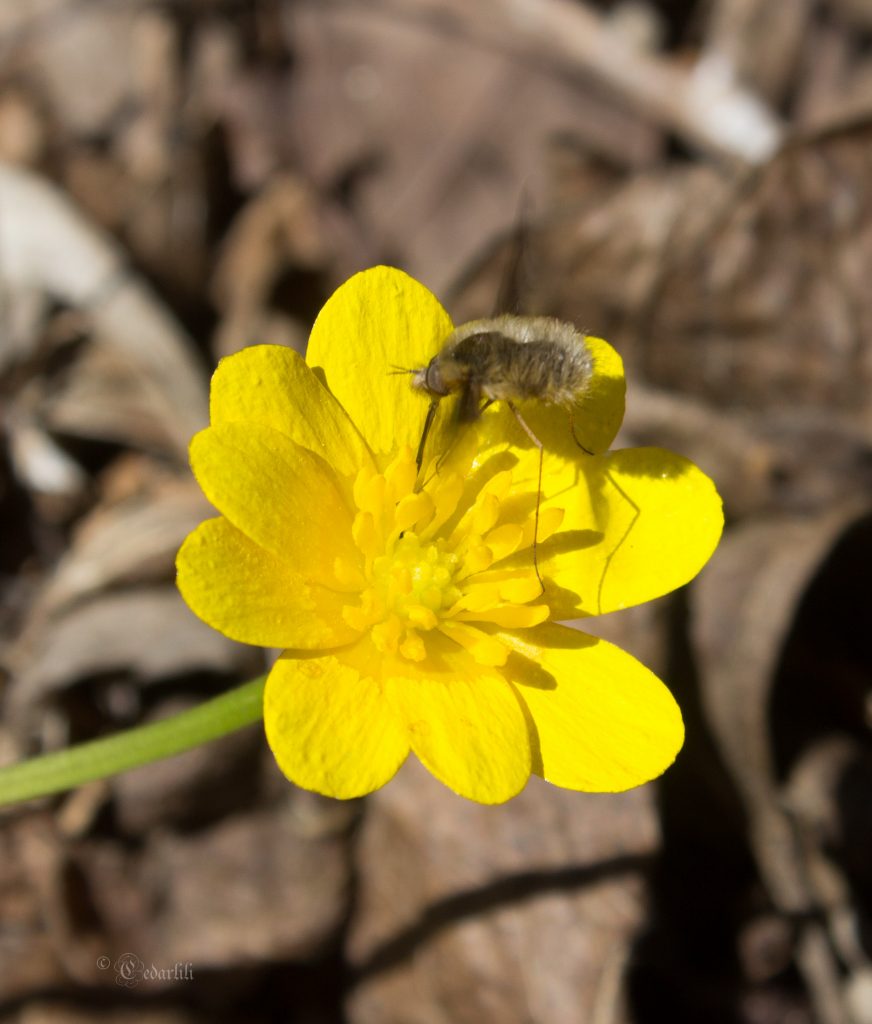It struck me this morning that my laissez faire approach to insect hunting is slowly morphing into something else. I was stalking bugs yesterday after work, just casting around behind the house for some little thing, and as I hung poised over the flowers waiting for movement so I could focus and shoot, it crossed my mind that I would love to do a book on native pollinators of Ohio. Or Southern Ohio, anyway. It’s a huge task, and the thought was as fleeting as the gnats who wouldn’t land and let me take their photo.

Then this morning when I put a photo of the millipede I’d found last night on Instagram, to break up the series of spiders I’d been posting, a friend’s comment brought the titular line into my head. He was offering to send me photos of a spectacular millipede found in his area, and I rejoined with my plan to hunt down all the native ‘pedes in this area… it’s not a little like Pokemon, it’s a lot like it. I want to photograph them all. The little ones, the hidden ones, the bright and beautiful ones..

It’s impossible, of course. There are far more invertebrates creeping, crawling, and flying around my area than I possibly have the time to track down, much less photograph. I don’t plan to go the old-school route of a physical collection. I don’t see the need for it, in my case. There is cause for physical collection – my Invertebrate Zoology class would have been much more difficult without the museum and preserved collections for us to pore over and study as we learned classifications and physiological terms. Coming back to my millipede, many of the species are identified using markers such as the male’s gonopods (yes, what it sounds like) and a microscope. For this to work, you need the actual specimen. For my purposes, I need a clearly focused photo of the tiny creature from a dorsal and a lateral angle. I’m unlikely to manage ventral, unless I resort to chilling my subjects as so many macrophotographers do. While it’s helpful in terms of control, I’m happier outside hunting them and never letting them know I’m there. Ok, the millipedes know, because I uncover them and the Daystar, it burnssss.…

It’s still fun to try, anyway. Thanks to the article I linked above, I know now that there are more species in my area of millipedes than I had any idea. Nor did I realize the most common of them was an invasive (that’s an article for another day…). I think I’ll see if I can catch them all with my camera. Unless I get distracted by other things like the wasp I photographed yesterday, a tiny black thing with elegant wings that gleamed blues and purples in the light. Going to look at the Bug Guide, I find that it’s a Hymenoptera, visually matches the Symphata (sawflies, horntails, and wood wasps) and is most likely an Early Sawfly (Dolerus unicolor). If you want to play along and catch them all in your area, I recommend the Bug Guide, as it’s well-laid out for visual identification along with the more technical taxonomic methods. For capture, if you are patient, you can photograph even small insects with a phone camera, if you don’t have a ‘good’ camera. For years I used a point-and-shoot that cost less than $100 and performed very nicely on the macro setting. You can even get clip-on macro lenses for your phone, although I will admit I haven’t tried them. Perhaps I should, and put up a review.

I sometimes think that it would have been fascinating to become a taxonomist, hunting down and naming new species. My photography is unlikely to uncover some undiscovered bug or flower, but it’s still fun to hunt, and then to figure out what I’ve got. I started photographing bugs because I liked to take flower shots, but adding action to a static flower was another step up in the game, capturing insects in motion as they pollinated. Later still I got in the habit of seeing the unseen, the spiders and hiding things most people don’t have any idea are there. I may never catch them all, but I can try!




